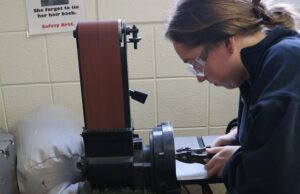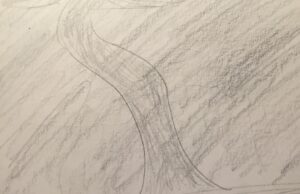Defining Art: When it comes to expression, leave prejudices behind
In 1917 what constitutes as art completely changed when an artist by the name of Marcel Duchamp under the pseudonym of Richard Mutt submitted a urinal turned on its side to the Society of Independent Artists for an art display in New York City.
This event largely stated that as long as the person submitting a piece to the Society would pay the fine of $6, then the art would be displayed, no matter what. Duchamp knew that this was not exactly true, so, taking on a false name because he already was a known artist, he went out to prove his point. Going out and buying a urinal, turning it on its side and writing “R. Mutt 1917” on it, he submitted it with the $6 fee to the Society.
Just like how he expected, the Society rejected it. They completely contradicted themselves, leaving the media to vastly report on the denial of the urinal. They said they had rejected it under the ideas of an object as offensive at the time as a urinal could never actually be true art. This started an incredibly broad debate about one simple question: What is art?
Would you personally consider a urinal turned on its side art? The answer is probably not, but what if you add a bow to it? What if you paint it a different color? What if you remove a piece of it? You can keep on changing more and more parts until you end up with something like the Venus de Milo, so where would the cutoff point be? When does it stop being a plumbing fixture and instead start being art?
That is one reason that using the term “art” conservatively does not work in language, as there is no agreed upon line that has art on one side and non-art on the other.
There have been many documented cases of people trying to censor what they deem as either too immoral or nonsensical to be considered art throughout the 20th and 21st centuries, such as Andres Serrano’s notorious photograph, “Piss Christ.” The picture was achieved in 1987 by submerging a plastic figurine of the religious figure Jesus Christ nailed to a crucifix in a jar filled with the photographer’s own urine. Unsurprisingly, many people have gotten upset about this over the years, leading to at least three separate occasions of people smashing the hanged photograph in Lambert Collection Contemporary Art Museum (as well as other places) into pieces. On top of that, the archbishop of Vaucluse, Jean-Pierre Cattenoz, has remarked that he wants “this trash taken off the gallery walls.”
Pushing further into the past, it is excruciatingly easy to find even more censorship of art, possibly most famously when addressing the work of Michelangelo. In his mural titled “The Last Judgement,” which was included on the walls of the Sistine Chapel, it depicts Jesus Christ from the Book of Revelation as he decides who will go to Heaven and who to Hell. Many catholics found the piece to be incredibly offensive and absolutely horrible, as the people depicted within the mural were not clothed. One of the critics was even the pope himself who presumably regretted letting someone like Michelangelo paint the Sistine Chapel, as he had one of the artist’s former pupils add loin cloths to all of the figures, removing the “offensive sight.”
Art is art, as nature is nature and the self is the self. Some might disagree, others rather strongly, but it does truly seem as if the only true way to define art is to just simply erase any words you have written and replace them all with the diagram of an atom, as there is no proper way to create a cutoff point in what is art or not.
Someone could say, “Well, all I need to know is that the Mona Lisa is real art and some urinal turned on its side is not,” but that person is not actually providing any line that separates the two from each other, only giving two sides of what they assume are the extremes.
What truly separates them from each other? The talent it took to achieve it? Then at what certain point does something go from involving enough talent to be considered art to having not enough? No matter what argument you use, you will be caught within a contradiction that you cannot escape.
Just because something might be scandalous or provocative, that gives no one the excuse to try and ban it, to title it “not true art.” The freedom of expression that we all are supposed to have as a basic human right has been restricted by many throughout history, but now we could enter a new age of acceptance, to truly allow those who need to express, well, express.
Not all art will be something you will personally want to see, but as long as we have the freedom to make it, please consider showing more respect to those who try to make the world just a tiny bit more beautiful.









You must be logged in to post a comment Login